Orchha – a treasure house of stories
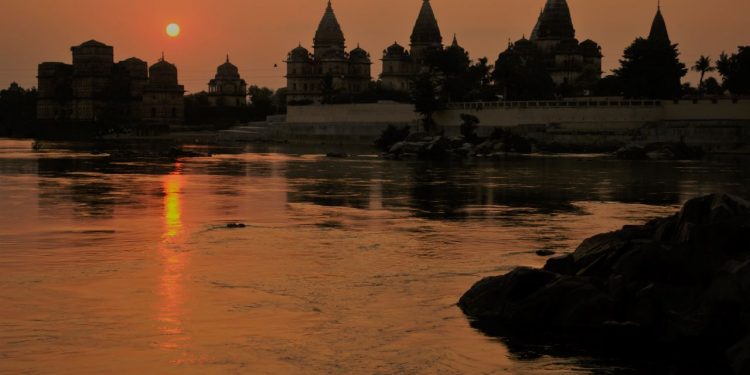
It’s not every day that you get to stay in a palace but here I am sleeping in one of the rooms which were built in the 16th century by a prince for his friend. The friend was no other than the Mughal emperor Jehangir and the palace named after him was built in Orchha by the Bundelkhand Raja Bir Singh Deo. I land here by chance. The rooms in the neighbouring Sheesh Mahal are full and the hotel staff gives me a humble little corner in Jehangir Mahal. It does not matter. Just walking outside the palace in the open and watching the moon rise against a starry sky is sheer bliss. I am in Orchha for just a couple of days and in this whirlwind trip, I explore some of the places to visit in Orchha and listen to their stories. As night closes in, I lose myself in tales of kings and queens.

As morning dawns, the beauty of Orchha stands out in front of me like a pretty maiden who has just unveiled her face. Standing from the terrace of the Jehangir Mahal, I can see the entire “ monumentscape” of Orchha framed against the dawn with the mist gently hovering over them. Beyond the terrace of the Raj Mahal, is the towering Chaturbhuj temple with the Ram Raj Mandir adjacent to it.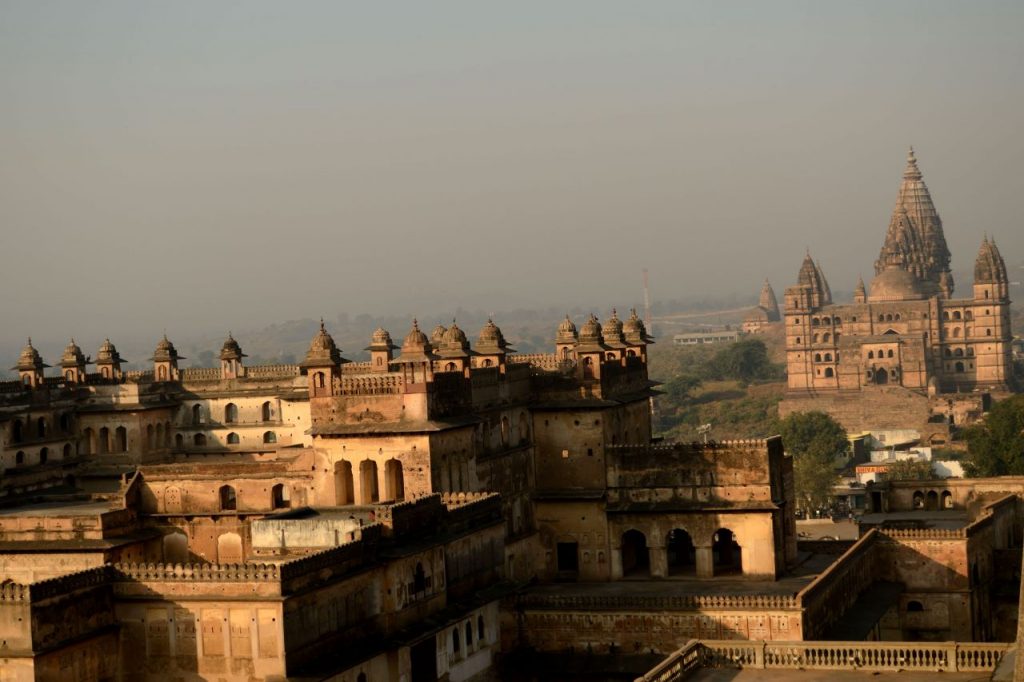
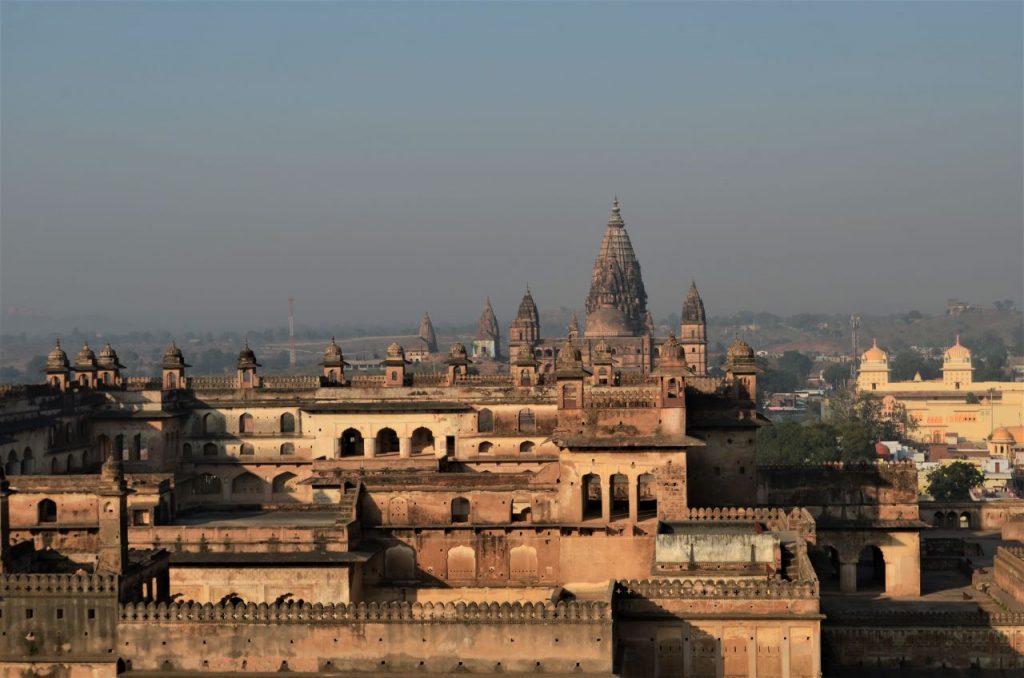
And in the distant horizon, stands the Laxmi Narayan temple, hardly visible in the mist. There is beauty in ruins, temples, palaces, and even in tombs. The vultures distract me as the eyes scan the remaining montage of monuments, all wrapped in a hazy sheet of white, orange, and yellow. The city however is silent. There are many popular Orchha tourist places but am in no hurry to head out on a sightseeing spree to explore some of the places to visit in Orchha.
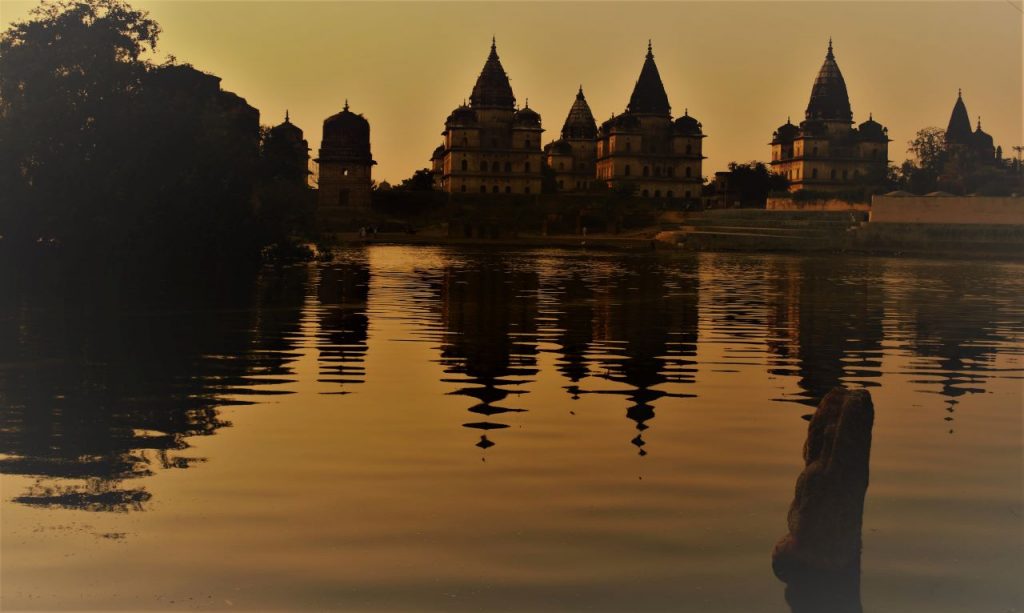

I walk up towards the River Betwa to catch the morning rays of the sun caress the cenotaphs of the Bundelkhand kings. The silhouetted “chattris” or cenotaphs have become the icons of the heritage city as they stand there, as a testimony to the grandeur of the dynasty. However Orchha founded by Bundela Rajpur chieftain Rudra Pratap is not a landscape of monuments. There is more to it than just a list of Orchha tourist places.
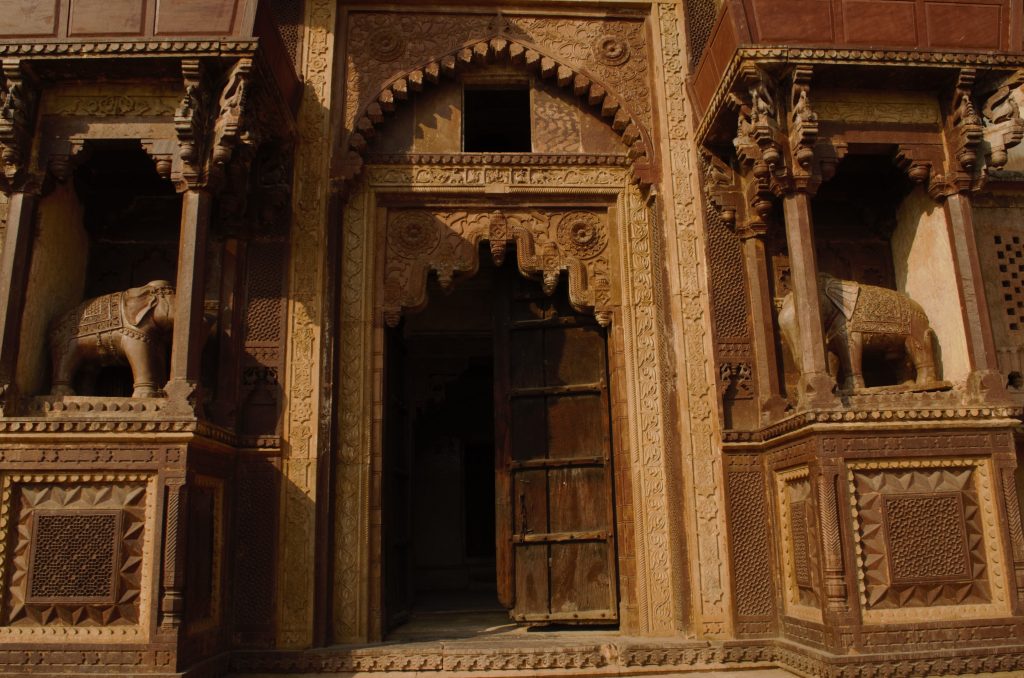

It is a town where the walls tell stories, where paintings reveal a culture, where tales of friendship, romance, betrayal, mysticism and sacrifice echo from every monument. Intriguing, funny, unbelievable and irresistible these stories breathe life into these ancient mahals and mandirs, some of them still in ruins.
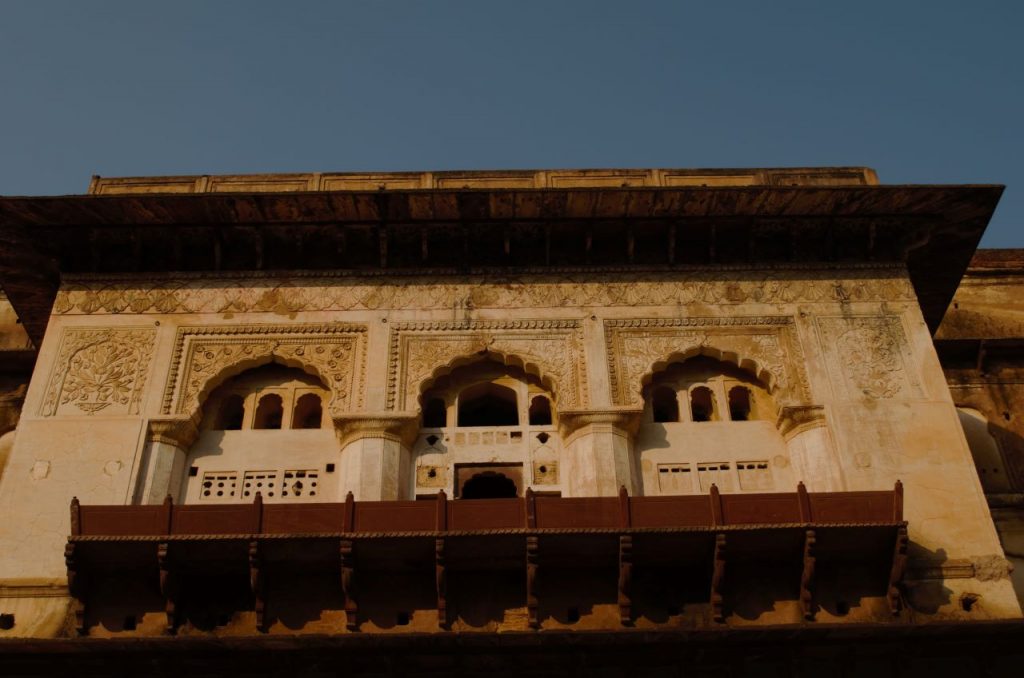
I cannot decide what fascinates me more – the Jehangir Mahal which was built as a symbol of friendship between the Mughal emperor and a Bundelkhand king or the virtual art gallery at Raj Mahal which is lost to the world or the paintings in Laxmi Narayan temple which takes you down to the era when the fiery Rani fought the Britishers. And then you see the cenotaphs basking in the morning light, surrounded by manicured lawns as vultures pose like sculptures on their ceilings.
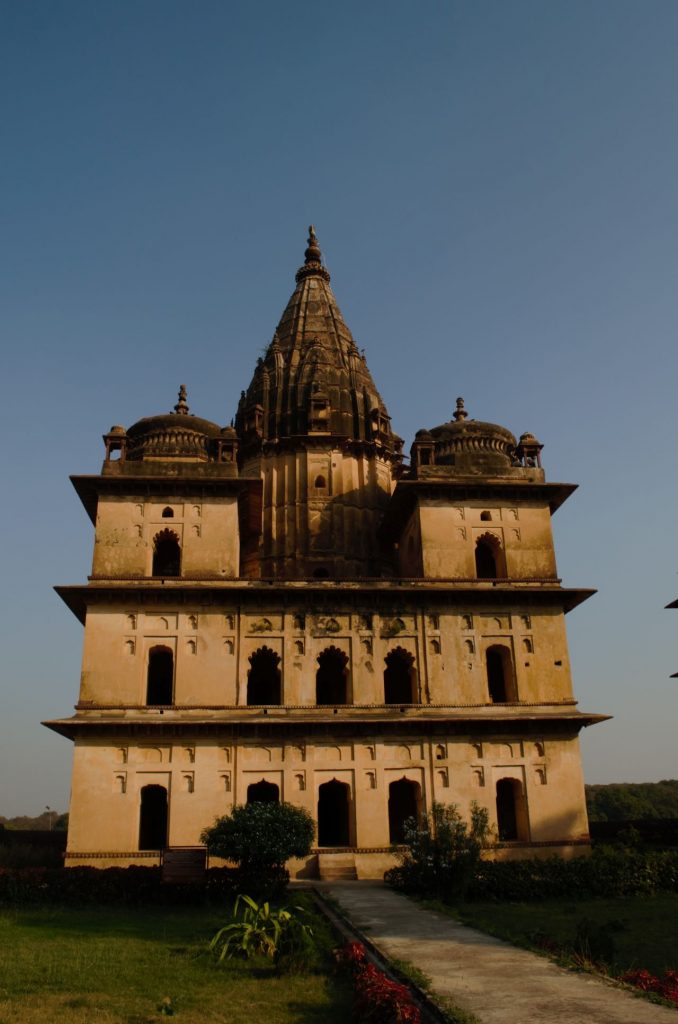
The most common story you hear in Orchha is the story of Jahangir Mahal, a palace that stands for friendship. Once a bitter enemy of the Mughals, Raja Bir Singh Deo helped Jahangir fight Abul Fazil who was sent by Akbar to kill his son. He gifted Jahangir with Abul Fazil’s head as a sign of loyalty. Moved by his gesture, Jahangir returned Bundelkhand to Raja Bir Singh Deo and crowned him the king .
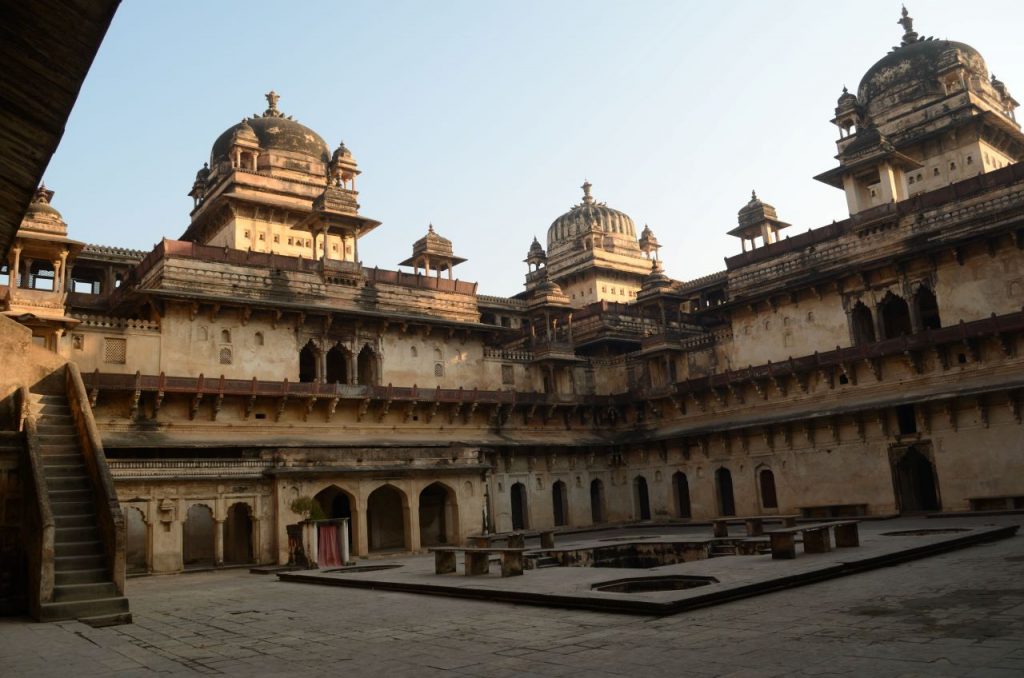
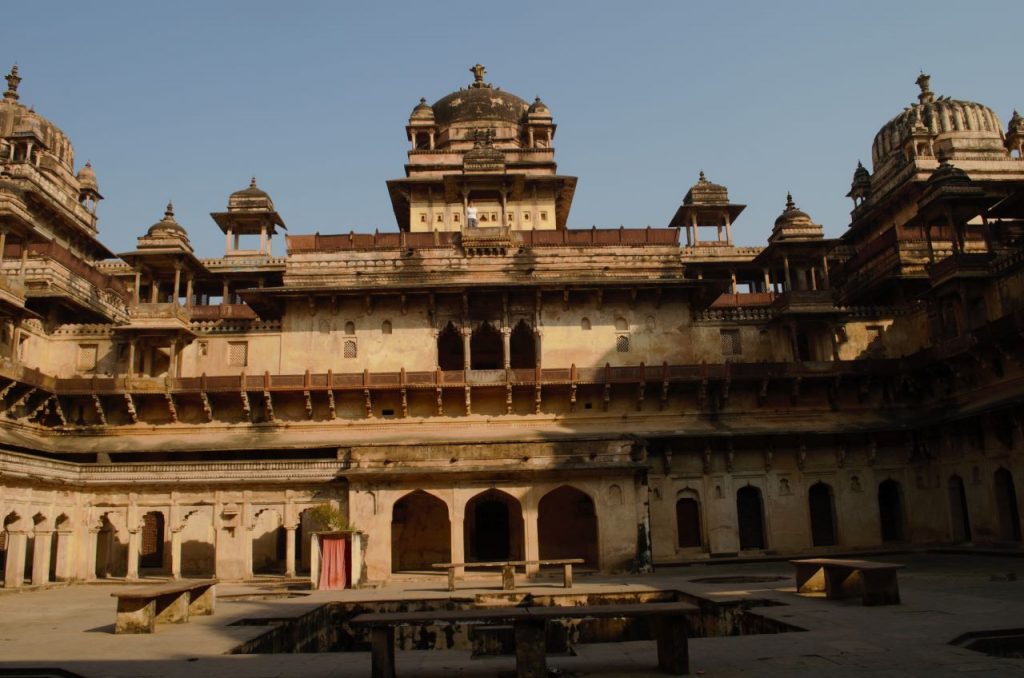
The Bundela king in turn built this palace to commemorate Jahangir’s visit to Orchha, but it is believed that the Mughal king stayed here for just one night. But the 236 chambers built over three storeys with an underground passage , decorated with ornate doors and domes and a massive courtyard in the centre simply leave you spellbound. All this was for a title of “Maharaja” given to Bir Singh in return for the head of Jehangir’s nemesis, Abul Fazl.
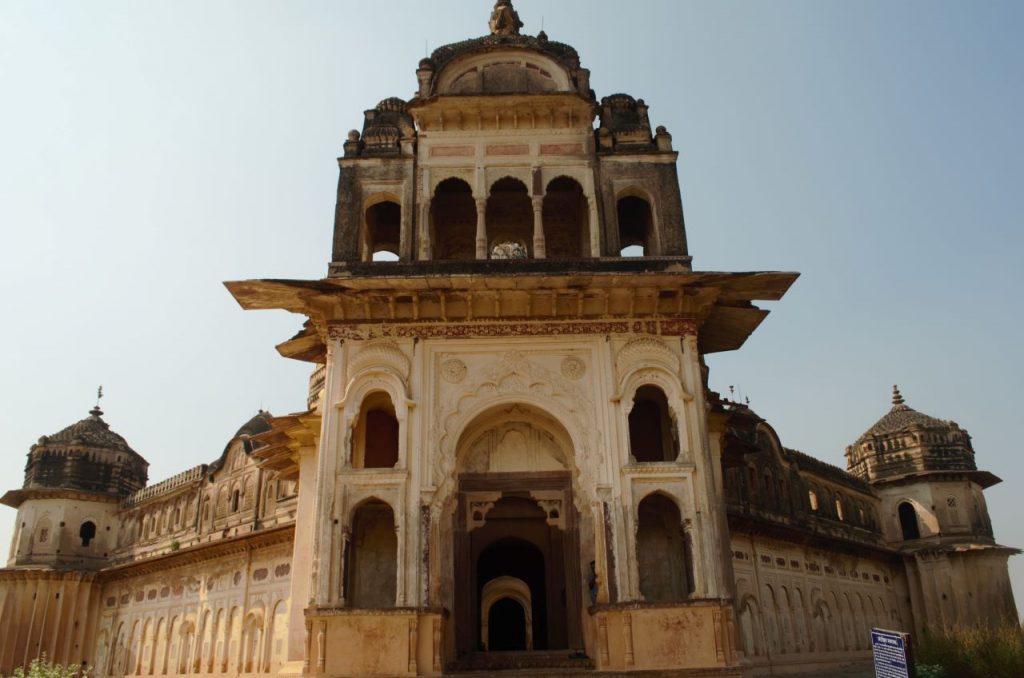

My favourite is the Laxmi Narayan temple – to begin with it hardly looks like a temple. The walls are painted with stories from history depicting wars, friendship and trade. One of the most popular places to visit in Orchha, the temple is more like a colourful art gallery that gives you glimpses of the historic past. 
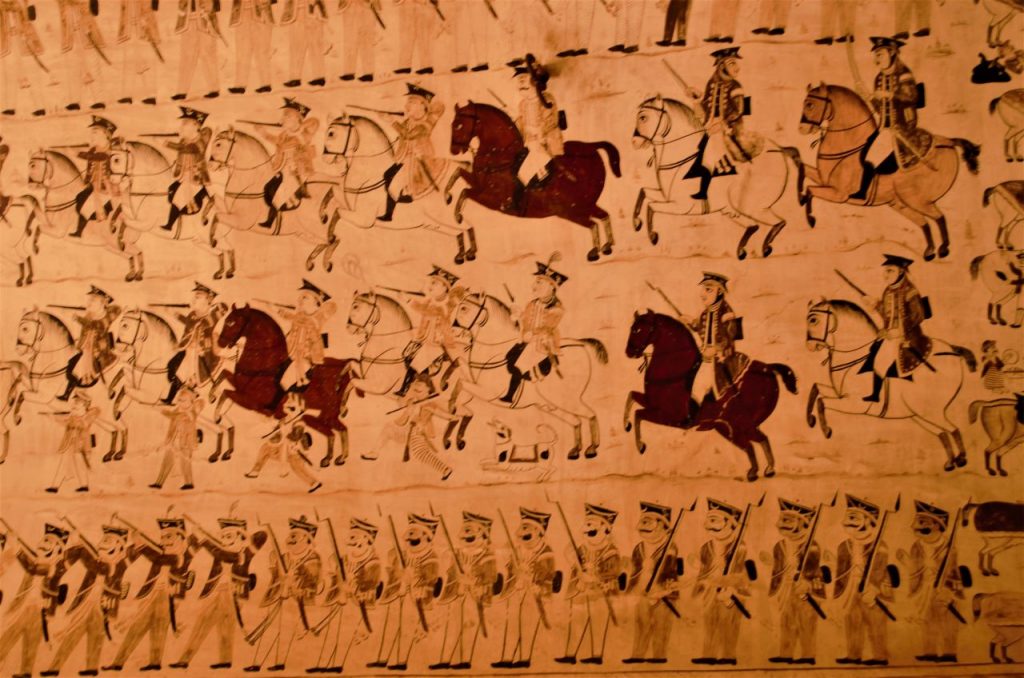
Rani Jhansi is immortalized here by the artists as we see soldiers all set for wars. One of the paintings shows the entry of Europeans into the political scenario. I see them socializing with the Indian kings in “high spirits “

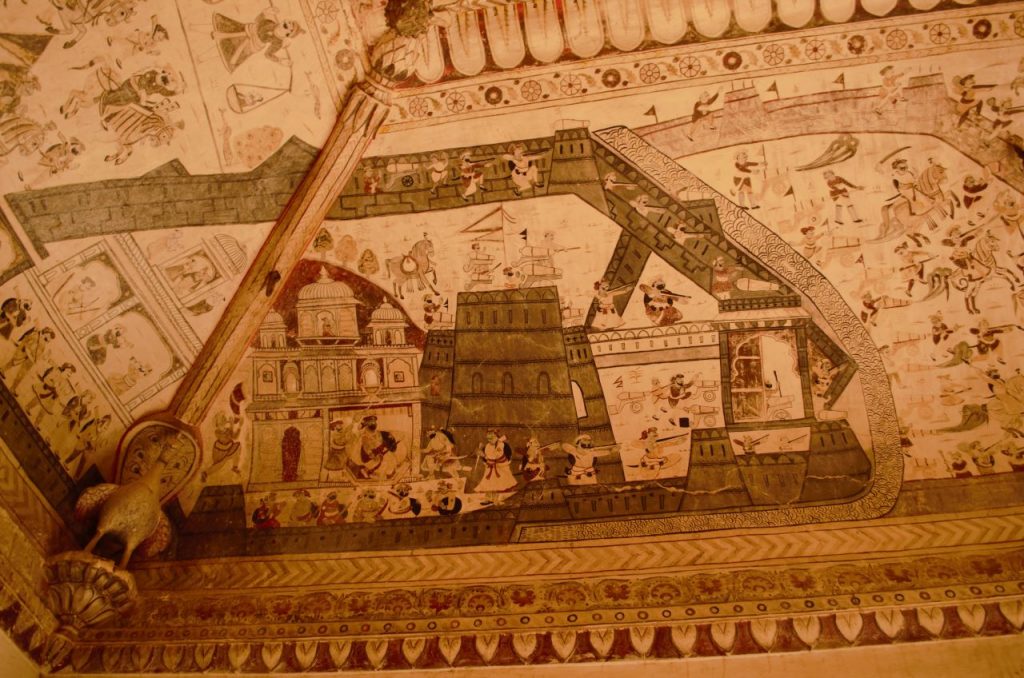
I am more fascinated by the lesser-known monuments and the local versions around it and decide to hire a local auto driver to take me around Orchha. While most guides will show you the paintings of the Raj Mahal and show you around the Chhatris, they will not take you down to the Rai Praveen Mahal close by. With stories of Jehangir and Shah Jahan in the air, I am waiting for a tale that would tell me a bit about Akbar. And I am not let down
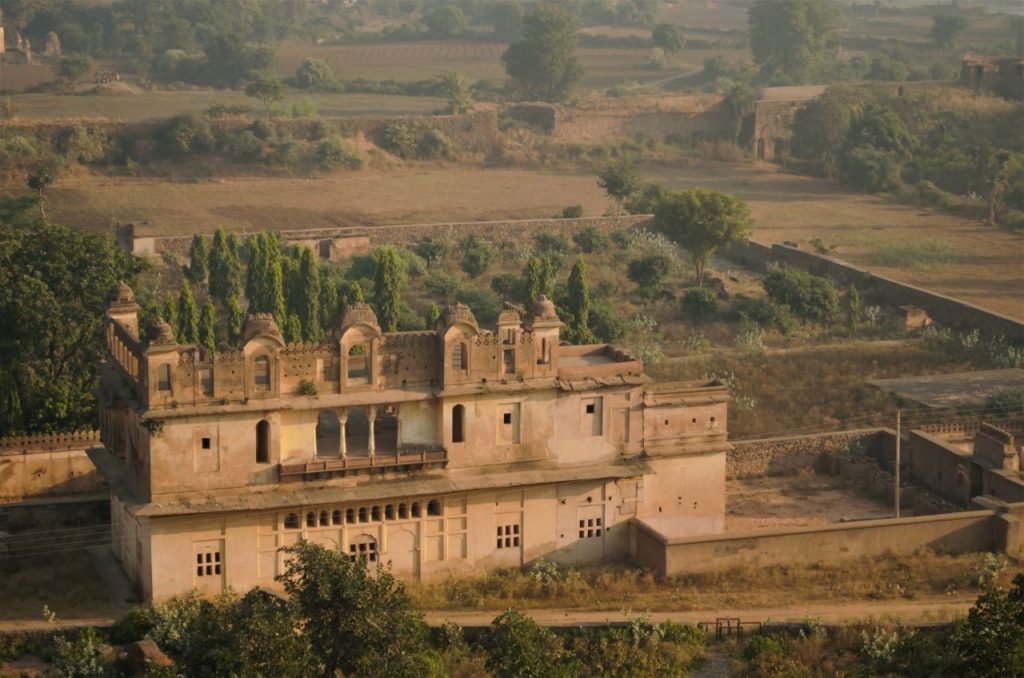
Stories around royalty are always infused with romance and here is your own Anarkali –Prince Salim story, except that this is no tragedy. The romance between courtesan Rai Praveen and the Bundelkhand king Indrajit became lore in the works of poet Keshav Das. One common folk tale speaks of how Akbar wanted her in his harem against the wishes of the Bundelkhand king. But the courtesan spoke her way out of Akbar’s heart who sent her back to Orchha. She apparently thwarted the Mughal emperor saying “only a royal servant or a crow or a dog will like to eat something that has already been tasted and polluted by another. “
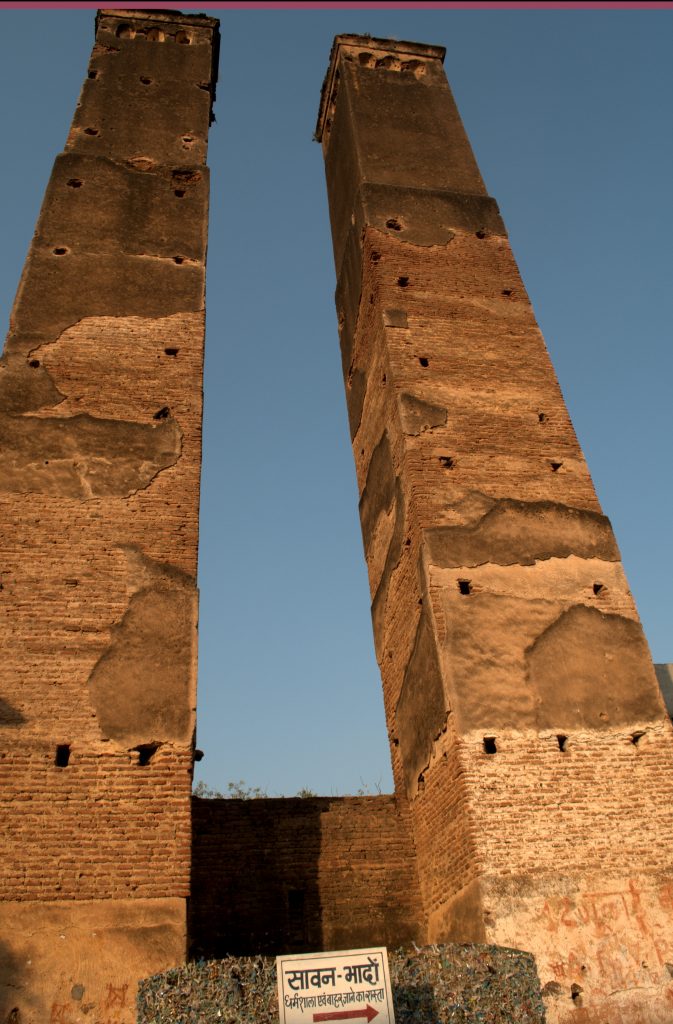
My local guide shows me two tall pillars that stand amidst a colourful but dirty market. They are called Sawan Bhadon. The locals say that they stand for two brothers who meet everyday at midnight. And I hear this version as well. Bagh Raj son of Bir Singh Deo met a seer who was on a “mouna vruth” during a hunting expedition. The seer remained quiet when the prince asked him about a particular kill he was chasing but the prince misunderstood the silence and went in the wrong direction. After a long frustrating day, he ordered the seer to be killed instead. The just king in return ordered the death of the prince. If you still believe that these pillars stand for the seer and the prince, then think again. Only my guidebook offers a plausible connection that these could be ventilators of an underground chamber for the army. They actually look like tall chimney vents to me.
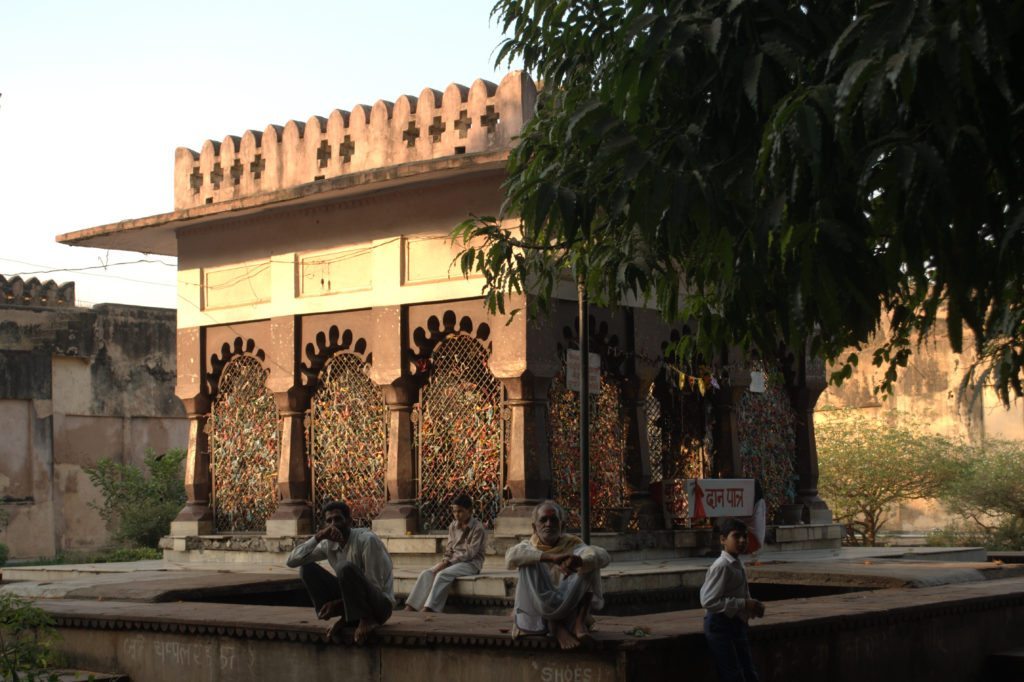
Hardol Shrine in the busy market in Orchha
And then I hear the most interesting tale of all, which would probably match up to a soap opera. It is the story behind the ruins of a melancholic yellow palace which now houses a bazaar – the palace of Dinman Hardol; brother of Raja.Jhujjar . A small temple close by has made the prince into a God. “Woh hamara Bhagavan hai .. Hamara raksha karta hai, kabhi bhi zinda aayega,” said a local woman, claiming that Hardol is alive and is their God. And that is when my guide tells me this story about one of the popular places to visit in Orchha.
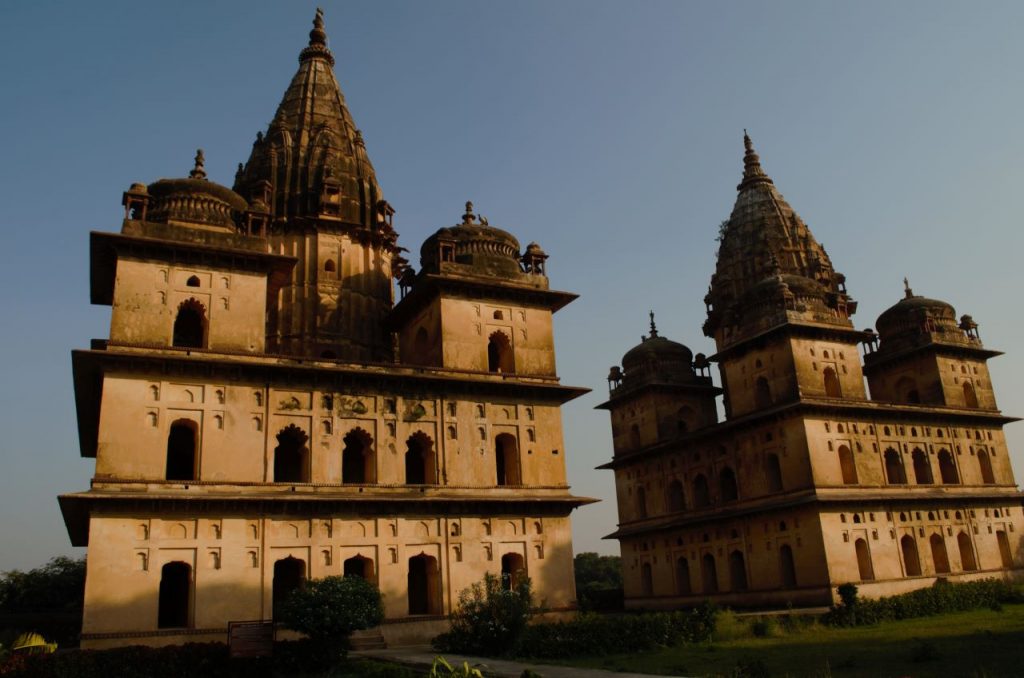

Hardol, the popular prince was resented by Jhujjar who further suspected his wife of having an illicit relationship with him. Fuelled by rumours by Emperor Shah Jahan, Jhujjar ordered his wife to poison Hardol to prove her innocence and Hardol willingly accepted it. The story doesn’t end here. When Jhujjar’s niece was getting married, his sister asked the king to help; who sarcastically asked her to seek the dead Hardol. The dead prince apparently attended the wedding and served the guests as well. The local woman exclaimed that even today it is believed that Lala Hardol attends weddings he is invited to and most locals leave an invitation card for him and seek his blessings as well. I did see a lot of local patrons around the temple and realized that real India lives somewhere in the legends of Lala Hardol.
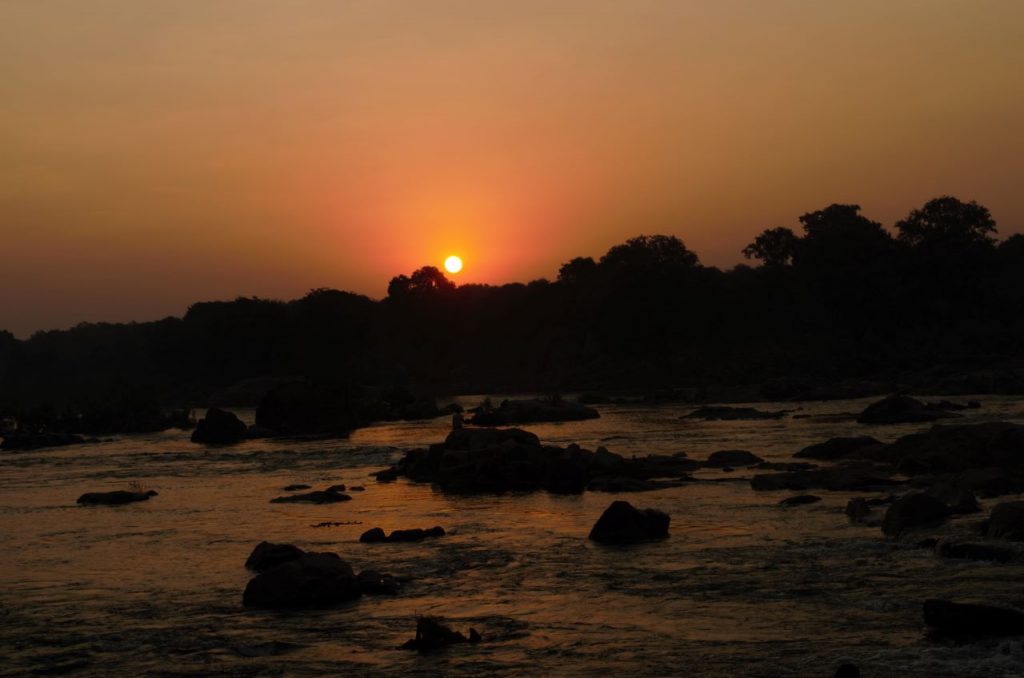
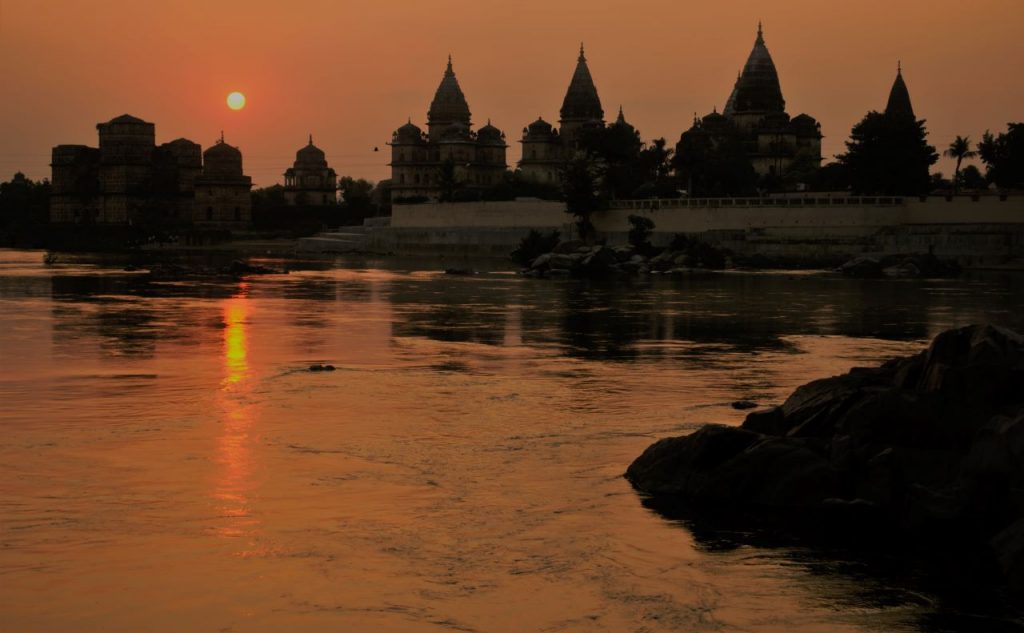
The setting sun interrupts our heritage tour as we rush to take the photograph of the cenotaphs against the setting sun. The Betwa river is shrouded in a coat of crimson as the sky slowly turns pink and purple even after the sun bids goodbye for the day. For a few moments, everything stands still but the beauty is absolutely lyrical. Finally we tear ourselves from the sight.
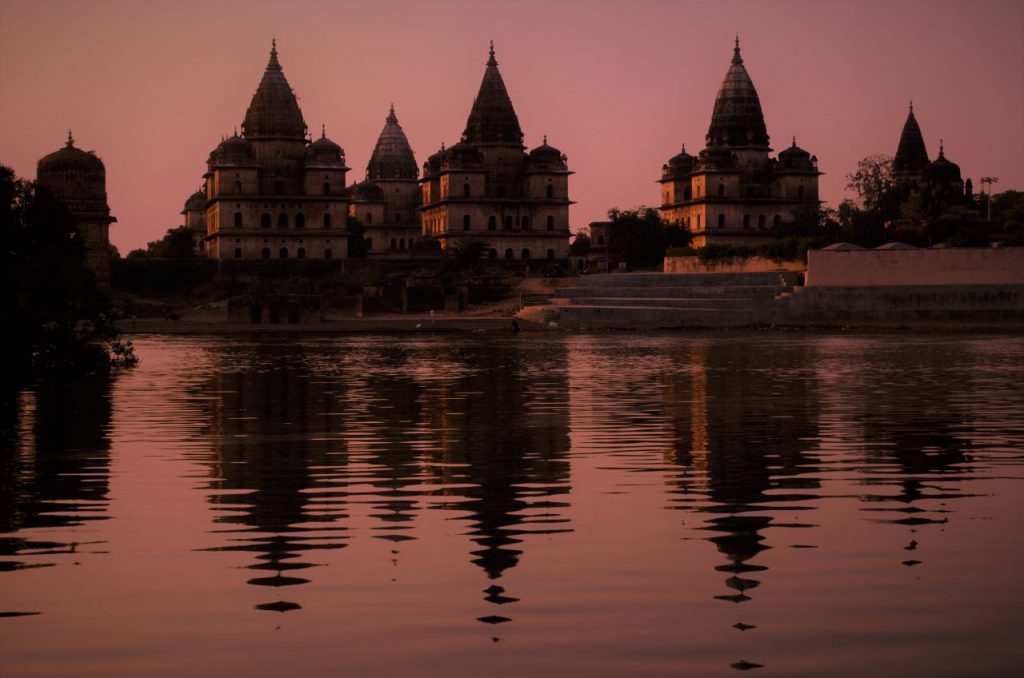
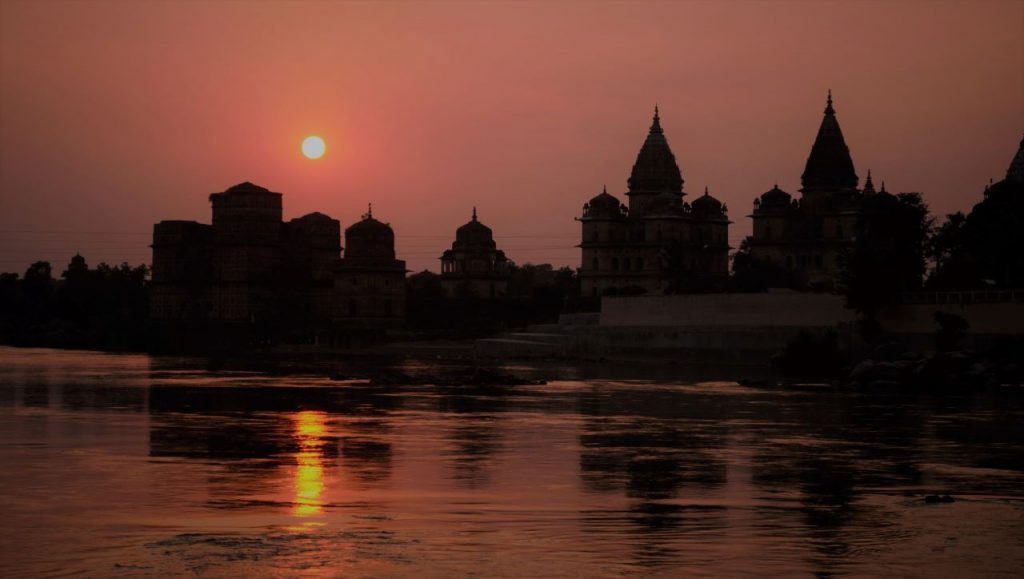
My last stop is the Ram Raja temple, where I stop by to see the evening Aarti. There are many legends around the temple . Stories of Lord Ram appearing in the queen’s dreams and asking her to build a temple for him are the most common ones. Later in the evening , when the dramatic sound and light show lit the fortresses of Raj, Sheesh and Jehangir Mahals, I hear another story behind the Ram Raja temple . The legend goes that while the king Madhukar Shah was a devotee of Krishna , his wife was an ardent devotee of Ram. The clash in devotion and deities apparently created a rift between the couple , when the king demanded that the queen returns from her pilgrimage to Ayodhya. with her deity in tow , but in the form of a boy. Faced with a choice of never being able to return to Orchha again, the queen fervently prayed to her God.
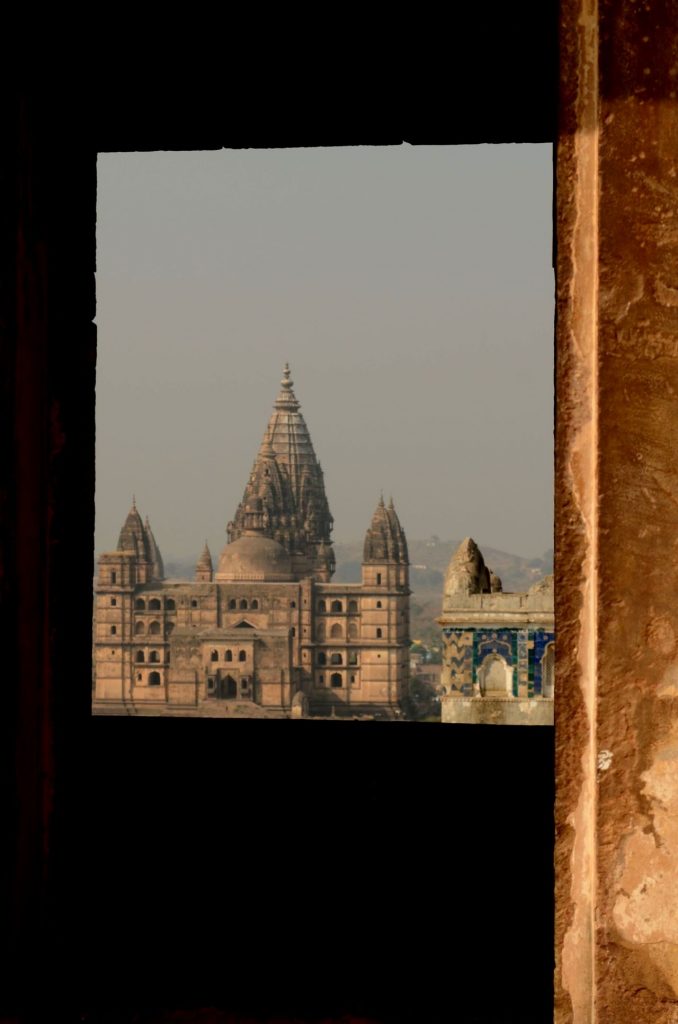
Her ardent prayers apparently pleased Ram that he agreed to come back to Orchha with her in the form of a boy, but on a condition – he will not move from one temple to another ; but will stay where she initially houses him. The sight of Ram as a child pleased the king that he agreed to build a temple for him, while the deity was worshipped by the queen in her palace. When the temple was eventually ready, the deity refused to move but remained in the queen’s palace which eventually became the Ram Raja temple . Ram is worshipped not just as a God, but as a king as well and his temple resembles a palace . And the temple built by the king was the adjoining Chaturbhuj temple which towers above the monument.
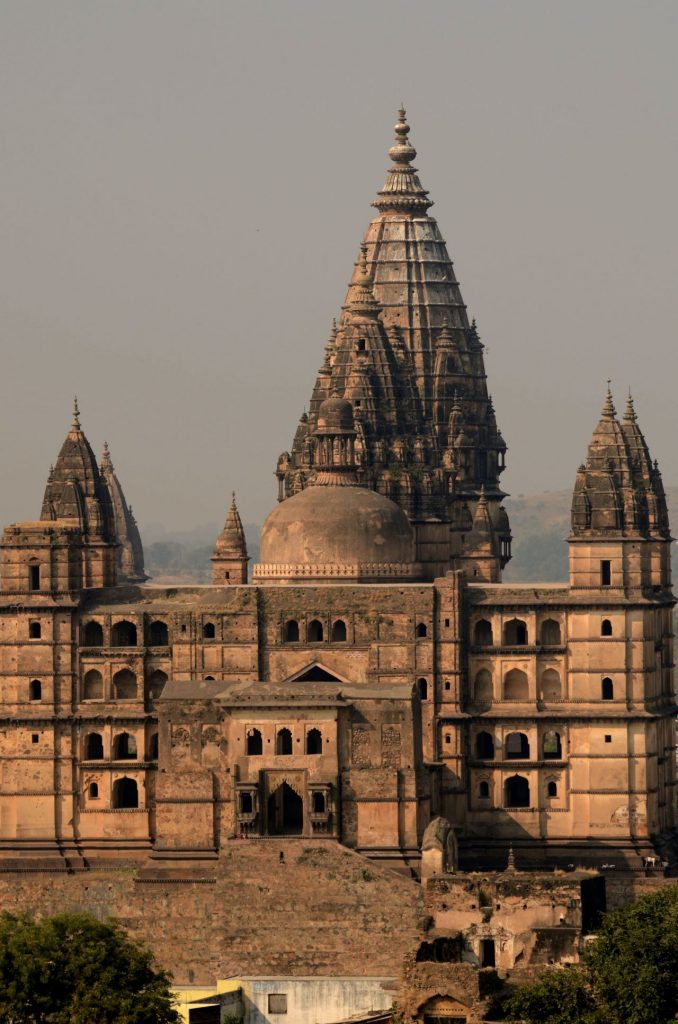
The temple, one of the popular places to visit in Orchha is an interesting fusion of modern architecture in an ancient palace with shrines scattered around. They simply do not blend although religion and heritage meet right in the heart of the town. All the other monuments in Orchha crowd around the Ram Raja temple. The courtyard is now an open bazaar selling anything from sweets to knick-knacks and is one of the famous Orchha tourist places.

The gun salutes reverberates through the night as the lights fade away . I am told that its a gun salute for the deity. As I walk back to my room at Jehangir Mahal, I see the distant outlines of the Ram Raja and Chaturbhuj temples bathed in the moonlight. I realize it is these tales that bring the monuments alive today. As the spectacular Sound and Light Show begins I am lost in the world of stories – not of battles fought and won, but of dead men coming alive, of gods accompanying a queen to her palace, of a king mercilessly killing his son for ruthlessly killing a seer.
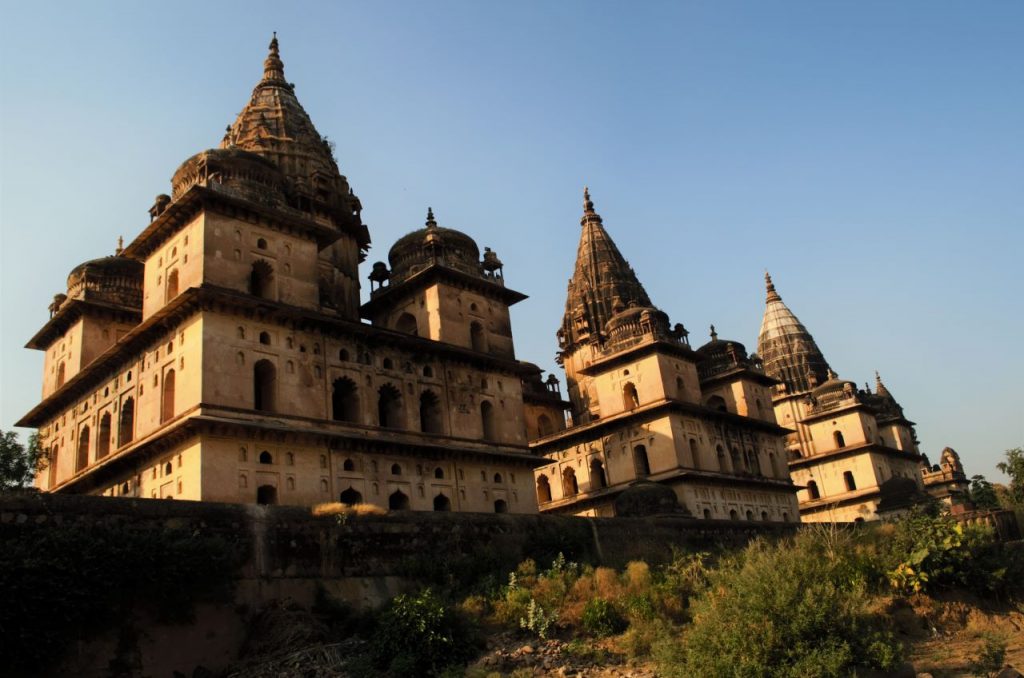
Have you been to Orchha ? Which is your favourite story and what would you recommend as some of the most popular places to visit in Orchha ? Do suggest an itinerary as well.
I was in Orchha on a personal holiday with my husband a decade ago in 2011.

